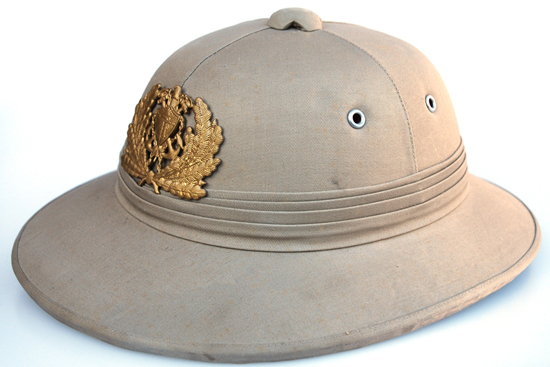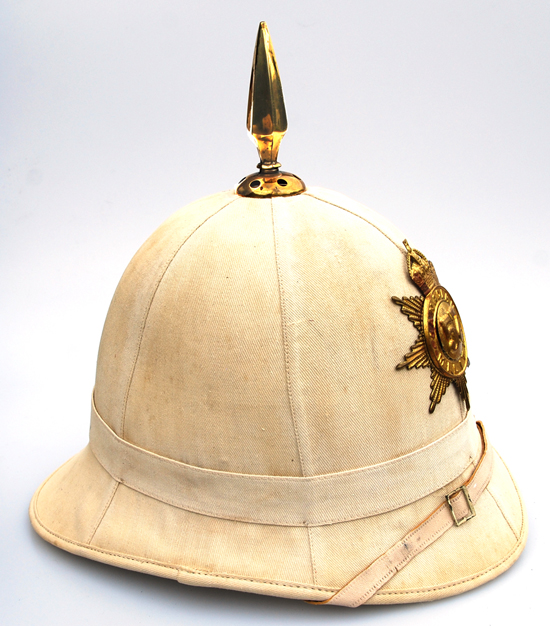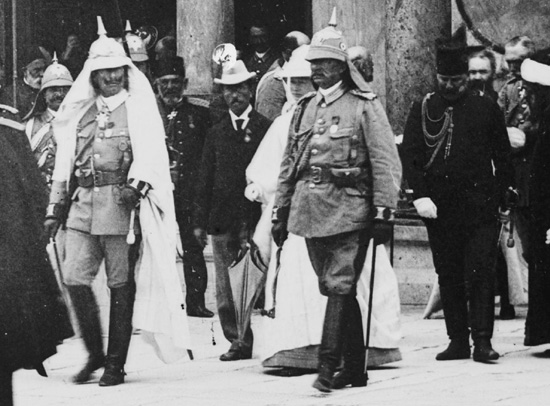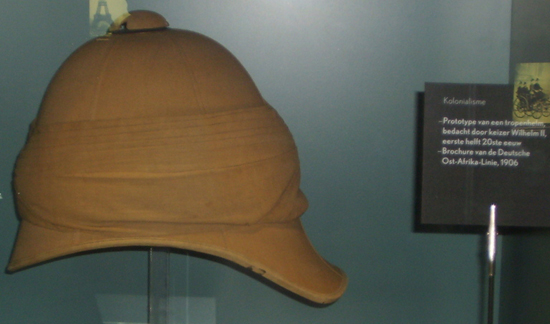 On this website, articles had been published about all kinds of inventions and patents that aimed to increase a sun helmet’s protection against heat. There were many kinds of different ventilation systems, double domes, aluminium foil or spine pads as a prolongation of neck flaps for the back. Now, one more idea was unwillingly and unintentional discovered by moths, that ate pieces of a helmet produced by Tress in London for Abercrombie & Fitch in New York. That is red fabric. Continue reading
On this website, articles had been published about all kinds of inventions and patents that aimed to increase a sun helmet’s protection against heat. There were many kinds of different ventilation systems, double domes, aluminium foil or spine pads as a prolongation of neck flaps for the back. Now, one more idea was unwillingly and unintentional discovered by moths, that ate pieces of a helmet produced by Tress in London for Abercrombie & Fitch in New York. That is red fabric. Continue reading
Category Archives: Germany
Straight to the Point: The History of the Spiked Helmet
Many colonial pattern sun helmets featured a spike at the dome, a feature reminiscent of the German “Pickelhaube” (Pointy Hat). This traditional of wearing a spike is one that appears to originate in the 1840s, and while a helmet with a spike on top is traditionally associated with Prussia and later Germany, the truth is that many nations including the United States, Great Britain, Portugal, Spain, Norway, Sweden and Chile all were among those that utilized the decorative spike. Continue reading
The East German-Vietnamese-Cuban Helmet Connection

A light fiber helmet of the so-called East German pattern with the badge of the Cuban Navy
German sun helmets are well-established. Imperial Germany had colonies in Africa, and during the Third Reich fielded the infamous Afrika Korps. However, a lesser known sun helmet is one purported to be of East German origin.
A few sources, including Paolo Marzetti’s Elmetti (“Helmets”) note the existence of a “DDR sun helmet, made in fibre material” the use of these helmets would seem to be limited. The Deutsche Demokratische Republik (DDR), or East Germany had no colonies of course. East German soldiers of the NVA (Nationale Volksarmee or National People’s Army) did serve as advisors to various African countries during the Cold War and it is possible the helmets may have been developed for this purpose. Continue reading
No plaintiff, but a judge: The Formal Dress Wolseley Helmet of Sir Norman George Armstrong Edgley, KC.
According to the former owner, this part of Sir Norman´s legacy – consisting of his Wolseley helmet, album of photographs, Royal Warrant, some more papers and his fly whisk – came from a private house auction and was brought there for fancy dress purposes. A nice idea – and a nice imagination as well, to go to a fancy dress party just covered with Sir Norman´s helmet and swinging his fly whisk. If one gets arrested dressed like this – there is still the Royal Warrant, signed by George VI., to have at least some kind of legitimation. But were to put it without a pocket? Maybe folded in the liner of the helmet, the same place where Lord Kitchener, according to his biographer Philip Magnus, carried dispatch leaflets with him. Continue reading
MAX Show 2012: Sun Helmets and Other Militaria
 The 25th annual Military Antiques Xtravaganza (MAX) Show took place in Monroeville, outside of Pittsburgh. This 1,500 table show is one of the two largest shows in North America and attracted dealers from around the world. As with past years there was far too much to see, but here is a recap of the sights of the 2012 MAX Show. Continue reading
The 25th annual Military Antiques Xtravaganza (MAX) Show took place in Monroeville, outside of Pittsburgh. This 1,500 table show is one of the two largest shows in North America and attracted dealers from around the world. As with past years there was far too much to see, but here is a recap of the sights of the 2012 MAX Show. Continue reading
The Last Kaiser’s Other Tropical Attire
This author previously noted that the collection of Kaiser Wilhelm II’s private uniforms at Huis Doorn included a mystery helmet that appears to be British; a helmet that he may have never wore in any official capacity. However, the last Kaiser of Germany did in fact wear a bombastic tropical uniform in his visit to Palestine in 1898 (shown above at the Temple Mount in Jerusalem).
While, this doesn’t explain how the apparent British six-panel colonial pattern helmet came to be a part of Willie’s personal items at Doorn, it does show that he was prepared for any occasion, including a visit to the Holy Land in German tropical attire. Continue reading
The Last Kaiser’s Sun Helmet
Kaiser Wilhelm II of Germany was forced into exile at the end of the First World War into the neutral Netherlands. From 1920 until his death in 1941 he lived in the small country estate in Holland known as Huis Doorn, which today is a museum and contains many personal items from the last Kaiser.
Among these items is an interesting helmet – which by all appearances is a British six-panel colonial pattern helmet with typical puggaree cloth wrapping. What makes this helmet particularly unique about this example is that it apparently was “created” by Wilhelm. Continue reading




